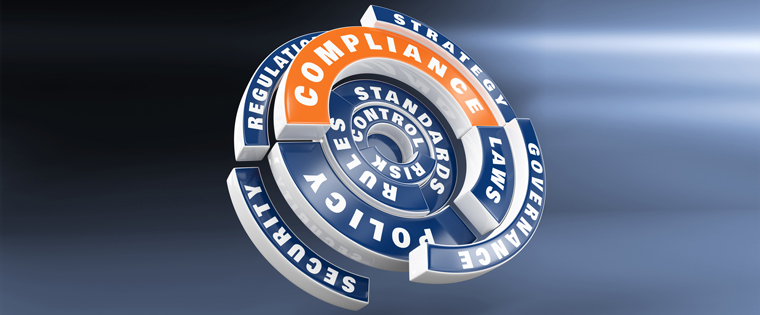Creating a Blended Learning Solution for Effective Compliance Training

“Oh no! What a bother!”, “This course puts me to sleep.”, “I don’t’ see any reason why I need to take this e-learning module every year.” Did you face similar reactions from your learners when you asked them to take an online course on the applicable rules and regulations? Well, you aren’t alone.
Many organizations use the self-paced technology-enabled learning format to deliver compliance training. According to a report published by the E-learning Magazine, nearly 65% of training content delivered online is compliance related. And, according to a benchmark study conducted by Towards Maturity, 67% of companies say user engagement is the top barrier to adopting technology-enabled compliance training.
Why do most online compliance courses fail to interest learners?
Compliance training programs are mandatory, and most organizations only focus on ensuring their completion. They “dump” the compliance training content online and learners are asked to take a quiz which consists of multiple choice questions. Little attention is paid to the design of the learning content and application of the knowledge gained. The dry nature of the compliance training content only compounds the problem of learner disinterest.
How can this problem be resolved?
Companies need to remember that the delivery of a good compliance training program (or for that matter, any training program) involves the following three steps:
- Making learners understand the importance of the program
- Ensuring the program engages learners effectively
- Enabling learners apply the learning to their jobs
A well-formulated blended learning strategy can go a long way in implementing these steps. Let us see how.
Creating a good blended learning solution for compliance training
You need to use a blend of classroom training, e-learning, mobile learning, and informal learning methodologies such as social learning to deliver effective compliance training.
Step 1: Making learners understand the importance of the compliance training program
You need to use techniques such as placing attractive posters about the need for compliance training at spots frequented by staffers, such as lift lobbies and cafeterias. You can also use social media to spread the word about training.
A blend of online and classroom learning methodologies can be used to educate your staffers about the importance of attending the compliance training program.
- An e-learning course containing a short video from the CEO or other members of the top brass explaining the necessity of compliance training can be of great help.
- It is a good idea to quote examples of other firms in the industry that have been penalized by regulatory authorities for violation of norms.This would help the workforce comprehend the need for the training.
For instance, one of our clients in the pharmaceutical space has released a video, containing a message from its CEO, where the loss suffered by another drug maker due to compliance violations was highlighted. The video urged the staff to undergo compliance training and prevent such violations from occurring. And, the video had the desired impact on staffers.
- You can also release “teasers” of the compliance course to dispel notions that it is boring.
- Short workshops need to be held where managers explain to their team members how the training helps them perform specific job tasks in a risk-free manner.
Staying on with the example of the pharmaceutical industry, sales managers can highlight the fact that the training would help reps prevent violations of norms pertaining to off-label marketing of drugs. Likewise, workers in a drug manufacturing facility need to be told that adherence to Good Manufacturing Practices (GMPs) would eliminate the danger of the medicines being recalled.
Step 2: Ensuring the program engages learners effectively
The right blend of instructor-led and technology-enabled learning methodologies is very useful to deliver compliance training in an effective, engaging manner.
- Workshops are ideal for training programs such as those on safety, where learners can be trained on the prescribed procedures.
- You can use a wide variety of online learning techniques to deliver the compliance training
- One of the time-tested instructional techniques is storytelling. Tell real-life stories of violations and where the penalized firms went wrong.
- It is also a good idea to use short videos not more than 10 minutes to train your staff on compliance matters.
For instance, the Chartered Institute of Management Accountants (CIMA) uses this micro video to train its members on business ethics.
- It’s better to conduct a pre-course assessment to test learners’ understanding of the subject matter, before assigning a compliance course. This is useful because it helps you identify what they already know and you can allow them to skip the modules that contain topics already familiar to them. This saves precious time of your learners.
Step 3: Enabling learners apply learning to their jobs
You need to use a blend of technology-enabled learning formats and strategies to enable your learners apply the knowledge and skills gained in the compliance training program.
- You can use e-learning modules containing appropriate scenarios and case-studies to evaluate your people’s ability to identify and prevent potential violations of applicable norms.
- It is also a good idea to gamify the assessments of your online courses.
For example, one of our clients in the insurance sector trains its people on the norms specified by the European Insurance and Occupational Pensions Authority (EIOPA) through gamified online courses. A ‘trekking game’ can be used to assess the knowledge of the personnel on Solvency II Directive. In this game, the learner is asked 20 questions and after he answers a question correctly, an avatar moves closer to the summit. And, when he gets the answer wrong, the avatar remains where it is and a message “Oops! Not quite right” is displayed on the screen.
- Mobile learning can be used very effectively to ensure your people adhere to the prescribed norms.
Staying on with EIOPA, the client uses microlearning modules to reinforce learning. It also provides staff mobile-compatible checklists, which act as ready reckoners to help prevent violations.
Companies can make their compliance training programs effective and engaging by formulating an appropriate blended learning strategy. You can use posters and social media to promote your training program, while short videos and workshops are very useful to educate learners on the benefits of attending the program. You need to use instructor-led sessions and training techniques such as storytelling and video-based learning to deliver the content of the compliance training program. It is advisable to use scenario-based online assessments to evaluate the ability of your people to identify and prevent violations of norms. You can also consider gamifying the assessments of your compliance training program. You need to make the best use of the mobile learning format for training reinforcement and providing learning support at the point of need. Hope you liked this post. How do you impart compliance training? We’d love to know..




![Let’s Estimate the Cost of eLearning Course Development [SlideShare]](https://blog.commlabindia.com/hubfs/Imported_Blog_Media/elearning-development-cost-factors-slideshare.jpg)
![Flash to HTML5 Conversion: Problems and Solutions [SlideShare]](https://blog.commlabindia.com/hubfs/Imported_Blog_Media/flash-html5-conversion-problems-solutions-slideshare.jpg)